For ten years, all you had to do to make money in emerging markets was throw money at them. From 2001 through 2010, the MSCI Emerging Markets index returned an eye-popping 16.2% annualized.
Don't expect a repeat of that kind of performance anytime soon. Indeed, since the start of 2011, the index has lost 4.2% annualized. And that includes a 7.8% loss so far this year (all returns are through July 30).
See Also: Look Overseas for Cheap Stocks
What should emerging-markets investors do now? Ruchir Sharma, head of the emerging-markets stock team at Morgan Stanley, says the secret is to choose the best markets. "In the developed world, the key is to pick the right industry sectors," he says. "In emerging markets, it's picking the best countries." Sharma wrote "Breakout Nations: In Pursuit of the Next Economic Miracles", a provocative book on emerging markets.
Top 10 Cheap Companies To Watch For 2014: DRDGOLD Limited(DROOY)
DRDGOLD Limited engages in the exploration, extraction, processing, and smelting of gold in South Africa. It holds interests in the Blyvoor mine; and the Crown gold surface tailings retreatment facility that reprocesses sand and slimes dumps, as well as involves in the surface retreatment operations. The company was incorporated in 1895 and is based in Roodepoort, South Africa.
Top 10 Cheap Companies To Watch For 2014: Global Payments Inc.(GPN)
Global Payments Inc. provides electronic transaction processing services for merchants, independent sales organizations (ISO), financial institutions, government agencies, and multi-national corporations located in the United States, Canada, Europe, and the Asia-Pacific region. It offers a comprehensive line of processing solutions for credit and debit cards; business-to-business purchasing cards; gift cards; and electronic check conversion and check guarantee, verification, and recovery, including electronic check services, as well as terminal management. The company also offers proprietary software products to establish revolving check cashing limits for the casinos? customers in the gaming industry. In addition, it sells, installs, and services automated teller machine and point of sale terminals; and provides card issuing services, including card management and card personalization. The company markets its products directly, as well as through ISOs, retail outlets, tra de associations, alliance bank relationships, and financial institutions. Global Payments Inc. has a joint venture with La Caixa Group to provide merchant acquiring services to merchants in Spain. Global Payments Inc. was founded in 2001 and is headquartered in Atlanta, Georgia.
Advisors' Opinion:- [By Monica Gerson]
Global Payments (NYSE: GPN) reported upbeat fiscal first-quarter results and raised its annual forecast. Global Payments named Jeffrey S. Sloan as its new chief executive and announced its plans to buy back up to $100 million of its common stock. Global Payments shares surged 6.80% to $54.15 in the after-hours trading session.
- [By Monica Gerson]
Global Payments (NYSE: GPN) is expected to post its Q1 earnings at $0.95 per share on revenue of $623.79 million.
Synergetics USA (NASDAQ: SURG) is projected to post its Q4 earnings at $0.06 per share on revenue of $17.01 million.
- [By Ben Levisohn]
Global Payments�(GPN) has gained 6.8% to $54.12 in pre-open trading after the payment processing company reported a profit of $1 a share, beating analyst forecasts of 95 cents. It also said it would buy back stock.
Best Small Cap Companies To Watch For 2014: S&P GSCI(GD)
General Dynamics Corporation, an aerospace and defense company, provides business aviation; combat vehicles, weapons systems, and munitions; military and commercial shipbuilding; and communications and information technology products and services worldwide. Its Aerospace group designs, manufactures, and outfits various large and mid-cabin business-jet aircraft; provides maintenance, repair work, fixed-based operations, and aircraft management services; and performs aircraft completions for aircraft. The company?s Combat Systems group offers tracked and wheeled military vehicles, weapons systems, and munitions. Its product lines include wheeled combat and tactical vehicles; battle tanks and infantry vehicles; munitions and propellant; rockets and gun systems; and axle and drivetrain components and aftermarket parts. This group also manufactures and supplies engineered axles, suspensions, and brakes for heavy-load vehicles for military and commercial customers. The company Advisors' Opinion:
- [By Katie Spence]
Who builds what
Both General Dynamics' (NYSE: GD ) Bath Iron Works shipbuilding company and Huntington Ingalls Industries' (NYSE: HII ) Ingalls Shipbuilding build the DDG 51 Aegis Destroyer, with the Navy typically buying ships from each builder. - [By Rich Smith]
The Department of Defense awarded a round dozen defense contracts Friday, worth just under $7.2 billion in aggregate. The bulk of the contracts -- $7 billion worth -- were split among eight small privately held firms scattered around New Jersey, Maryland, Indiana, and Virginia contracted to supply software and systems engineering services in support of the Army's Software Engineering Center. But a handful of better-known -- and, more importantly to investors, publicly traded -- companies won contracts as well. Namely:
- [By Rich Smith]
Huh? What?
I know. That hardly seems to make sense, does it? Oshkosh simply crushed analyst earnings estimates for the quarter, delivering $0.97 per share in profit where only $0.86 were forecast. It added a dime to its full-year forecast as well, predicting that earnings could rise as high as $3.15 by year-end. First-half operating profit margins, at 5.8%, still fall far short of rival armored-vehicle makers Textron (NYSE: TXT ) and General Dynamics (NYSE: GD ) . But Oshkosh is now neck-and-neck with heavy-equipment maker Terex (NYSE: TEX ) , and is simply smoking unprofitable rival MRAP maker Navistar (NYSE: NAV ) . - [By Rich Smith]
America's generals want a new tank, and General Dynamics (NYSE: GD ) would love to build it for them.
On Wednesday, the armored-vehicle specialist announced that its General Dynamics Land Systems subsidiary, or GDLS, is "leading an effort to develop the first North American combat vehicle with a fully integrated Active Protection System," or APS.
Top 10 Cheap Companies To Watch For 2014: Freeport-McMoran Copper & Gold Inc.(FCX)
Freeport-McMoRan Copper & Gold Inc. engages in the exploration, mining, and production of mineral resources. The company primarily explores for copper, gold, molybdenum, silver, and cobalt. It holds interests in various properties, located in North and South America; the Grasberg minerals district in Indonesia; and the Tenke Fungurume minerals district in the Democratic Republic of Congo. As of December 31, 2010, the company?s consolidated recoverable proven and probable reserves totaled 120.5 billion pounds of copper, 35.5 million ounces of gold, 3.39 billion pounds of molybdenum, 325.0 million ounces of silver, and 0.75 billion pounds of cobalt. The company was founded in 1987 and is headquartered in Phoenix, Arizona.
Advisors' Opinion:- [By Matt DiLallo]
Goldcorp isn't alone in cutting its capital budget amid falling metal prices. Freeport-McMoRan (NYSE: FCX ) , for example, is slashing $1.9 billion from its capital budget over the next two years so that it can maintain balance sheet flexibility in light of falling copper and gold prices. It's the same story at Teck Resources (NYSE: TCK ) , which is also reducing its capital expenditures over the next two years. Teck is cutting $150 million out of its original $2 billion capex budget. Meanwhile, the company is targeting to keep its sustaining capex to $500 million next year. These moves are to better align these companies with current market conditions, as well as to improve cash flow and strengthen balance sheets.
Top 10 Cheap Companies To Watch For 2014: CVS Corporation(CVS)
CVS Caremark Corporation operates as a pharmacy services company in the United States. The company?s Pharmacy Services segment provides a range of pharmacy benefit management services, including mail order pharmacy services, specialty pharmacy services, plan design and administration, formulary management, and claims processing; and drug benefits to eligible beneficiaries under the Federal Government?s Medicare Part D program. This segment primarily serves employers, insurance companies, unions, government employee groups, managed care organizations and other sponsors of health benefit plans, and individuals. As of December 31, 2010, it operated 44 retail specialty pharmacy stores, 18 specialty mail order pharmacies, and 4 mail service pharmacies located in 25 states, Puerto Rico, and the District of Columbia. This segment operates business under the CVS Caremark Pharmacy Services, Caremark, CVS Caremark, CarePlus CVS/pharmacy, CarePlus, RxAmerica, Accordant, and TheraCom names. The company?s Retail Pharmacy segment sells prescription drugs, over-the-counter drugs, beauty products and cosmetics, seasonal merchandise, greeting cards, and convenience foods through its pharmacy retail stores and online, as well as offers film and photo finishing, and health care services. This segment operated 7,182 retail drugstores located in 41 states, Puerto Rico, and the District of Columbia; and 560 retail health care clinics in 26 states and the District of Columbia under the MinuteClinic name. It has a strategic alliance with Alere, L.L.C. for the management of disease management program offerings that cover chronic diseases, such as asthma, diabetes, congestive heart failure, and coronary artery disease. CVS Caremark Corporation was founded in 1892 and is based in Woonsocket, Rhode Island.
Advisors' Opinion:- [By Dan Caplinger]
Preliminary results show decent success with Walgreen's strategy. During April, same-store sales rose 1.2%, with larger gains of 4.7% in pharmacy sales pointing to customers returning to Walgreen's fold. May's increase in comps of 2.8% showed the same tilt toward the pharmacy side of the business. Yet, rival CVS Caremark (NYSE: CVS ) has also given investors some positive news, guiding earnings and revenue last month to the upper end of previously provided ranges amid favorable impacts of greater generic-drug availability. Despite Walgreen's success, CVS remains a strong competitive threat, especially with its combination of pharmacy benefits management and retail drug stores.
Top 10 Cheap Companies To Watch For 2014: The Travelers Companies Inc.(TRV)
The Travelers Companies, Inc., through its subsidiaries, provides various commercial and personal property and casualty insurance products and services to businesses, government units, associations, and individuals primarily in the United States. The company operates in three segments: Business Insurance; Financial, Professional, and International Insurance; and Personal Insurance. The Business Insurance segment offers property and casualty products and services, such as commercial multi-peril, property, general liability, commercial auto, and workers? compensation insurance. It operates in six groups: Select Accounts, which serves small businesses; Commercial Accounts that serves mid-sized businesses; National Accounts, which serves large companies; Industry-Focused Underwriting that serves targeted industries; Target Risk Underwriting, which serves commercial businesses requiring specialized product underwriting, claims handling, and risk management services; and Special ized Distribution that offers products to customers through licensed wholesale, general, and program agents. The Financial, Professional, and International Insurance segment provides surety and financial liability coverage, which uses a credit-based underwriting process; and property and casualty products primarily in the United States., the United Kingdom, Ireland, and Canada. The Personal Insurance segment offers property and casualty insurance covering personal risks, primarily automobile and homeowners insurance to individuals. It distributes its products through independent agents, sponsoring organizations, joint marketing arrangements with other insurers, and direct marketing. The company was founded in 1853 and is based in New York, New York.
Advisors' Opinion:- [By Dan Carroll]
With the fear winding down, all eyes return to earnings season -- and the Dow had four firms at the plate today. Insurance company Travelers (NYSE: TRV ) kicked things off with a strong report this morning, and shares of the company have jumped 2%. Travelers reported an 11% year-over-year gain in earnings and record quarterly operating profit, easily beating average analyst expectations. The firm also raised its dividend, and despite record-low interest rates that have pressured the company's financials, Travelers' price hikes over the past couple of years have paid off: The company's consumer insurance business helped fuel the earnings beat.
Top 10 Cheap Companies To Watch For 2014: Progress Software Corporation(PRGS)
Progress Software Corporation operates as an enterprise software company worldwide. Its products include Progress OpenEdge platform, which offers development tools, application servers, application management tools, and an embedded database; Progress Orbix to address enterprise integration problems with standards-based solutions; and Progress ObjectStore, an object data management system to store data faster than relational database management system or file-based storage system. The company?s products also comprise Progress Responsiveness Process Management suite for business users; Progress Control Tower, an interactive business control panel; Progress Sonic, which comprises an enterprise messaging system and the enterprise service buses; Progress Actional that provides operational and business visibility, root cause analysis, and policy-based security and control of services; Progress Apama, which offers tools for creating, testing, and deploying strategies for applicat ions, including algorithmic trading, market aggregation, smart order routing, market surveillance and monitoring, and risk management; Progress Savvion BusinessManager, a business process management software; and Fuse products that provide customers with access to professional open source integration and messaging software. In addition, it offers Progress DataDirect Connect products, which provide data connectivity components; Progress DataDirect Shadow to provide foundation architecture for standards-based mainframe integration; and Progress Data Services product set that offers data integration for distributed applications. Further, the company provides maintenance, consulting, training, and customer support services. Progress Software Corporation sells its products to independent software vendors, original equipment manufacturers, and system integrators through direct sales force and independent distributors. The company was founded in 1981 and is based in Bedford, Massac husetts.
Advisors' Opinion:- [By Rick Munarriz]
Progress Software (NASDAQ: PRGS ) moved higher after posting better-than-expected quarterly results this week. The provider of developer tools software saw revenue rise by a better-than-expected 10%, and its adjusted net income of $0.27 a share blew past the $0.22 a share that the market was forecasting.�
Top 10 Cheap Companies To Watch For 2014: Express-1 Expedited Solutions Inc.(XPO)
XPO Logistics, Inc. provides third-party logistics services using a network of relationships with ground, sea, and air carriers in the United States, Mexico, and Canada. It operates in three segments: Express-1, Concert Group Logistics, and Bounce Logistics. The Express-1 segment offers ground expedited surface transportation services for freight. It operates a fleet ranging from cargo vans to semi tractor trailer units. The Concert Group Logistics segment provides domestic and international freight forwarding services through a network of independently owned stations. Its domestic freight forwarding services include air charter, expedites, and time sensitive services, as well as cost sensitive services comprising deferred delivery, less than truckload, and full truck load services; and international freight forwarding services consist of on-board courier and air charters, time sensitive services, less-than-container and full-container-loads, and vessel charters. This segm ent also offers documentation on international shipments, customs clearance and banking, trade show shipment management, time definite and customized product distributions, reverse logistics and on site asset recovery projects, installation coordination, freight optimization, and diversity compliance support services. The Bounce Logistics segment provides premium freight brokerage services for truckload shipments. The company serves approximately 4,000 retail, commercial, manufacturing, and industrial customers through 6 U.S. operations centers and 22 agent locations. It offers its services to the automotive manufacturing, automotive components and supplies, commercial printing, durable goods manufacturing, pharmaceuticals, food and consumer products, and high tech sectors. The company was formerly known as Express-1 Expedited Solutions, Inc. and changed its name to XPO Logistics, Inc. in September 2011. XPO Logistics, Inc. was founded in 1989 and is based in Buchanan, Michi gan.
Advisors' Opinion:- [By Travis Hoium]
What: Shares of XPO Logistics (NYSE: XPO ) jumped 13% today after announcing an acquisition.
So what: The company will pay $365 million for logistics provider 3PD, consisting of $357 million in cash an $8 million in XPO restricted stock. Is will use its own cash and borrow $195 million from Credit Suisse Group for the remainder of the purchase. �
Top 10 Cheap Companies To Watch For 2014: Majesco Entertainment Company(COOL)
Majesco Entertainment Company develops and markets video game products primarily for family oriented mass-market consumers. The company publishes video games for various interactive entertainment hardware platforms, including Nintendo?s DS, DSi, and Wii; Sony?s PlayStation 3 and PlayStation Portable; Microsoft?s Xbox 360; and personal computers. It also publishes games for various digital platforms consisting of mobile platforms comprising iPhone, iPad, and iPod Touch, as well as online platforms, including Facebook. The company sells its products primarily to retail chains, specialty retail stores, video game rental outlets, and distributors. The company was founded in 1998 and is based in Edison, New Jersey.
Top 10 Cheap Companies To Watch For 2014: Popular Inc.(BPOP)
Popular, Inc., through its subsidiaries, provides a range of retail and commercial banking products and services primarily to corporate clients, small and middle size businesses, and retail clients in Puerto Rico and Mainland United States. It offers deposit products; commercial, consumer, and mortgage loans, as well as lease finance; and finance and advisory services. The company also offers trust and asset management, brokerage and investment banking, and insurance and reinsurance services. As of December 31, 2010, it owned and occupied approximately 94 branch premises and other facilities in Puerto Rico; and 119 offices, including 20 owned and 99 leased in New York, Illinois, New Jersey, California, Florida, and Texas. Popular, Inc. was founded in 1917 and is headquartered in San Juan, Puerto Rico.
Advisors' Opinion:- [By Jake L'Ecuyer]
Popular (NASDAQ: BPOP) shares tumbled 5.54 percent to $27.48 after Morgan Stanley downgraded the stock from Equal-weight to Underweight.
Pacific Coast Oil Trust (NYSE: ROYT) down, falling 7.13 percent to $16.70 after the company priced a public offering by Pacific Coast Energy Company LP and other selling unitholders of 13,500,000 trust units at a price of $17.10 per unit.
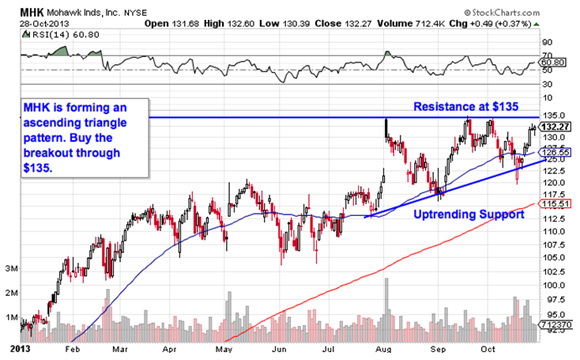
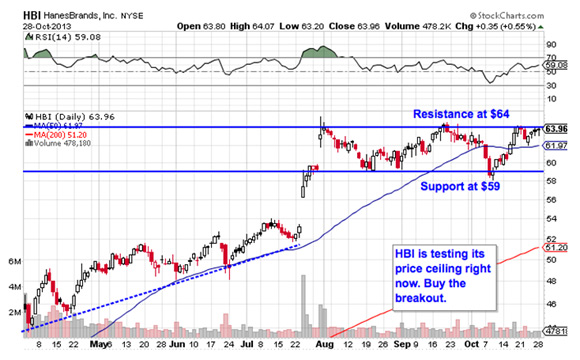
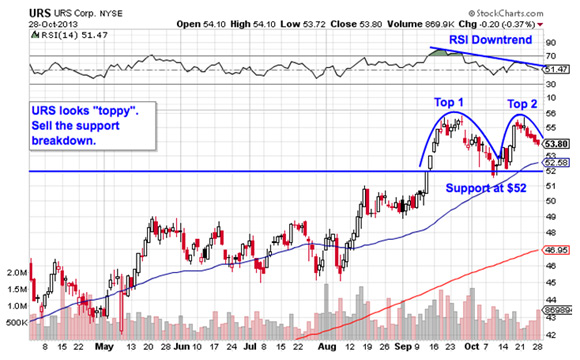
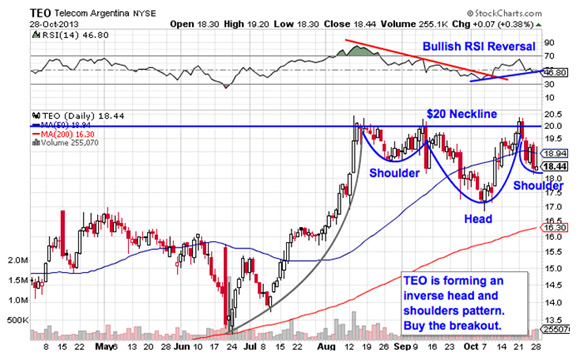
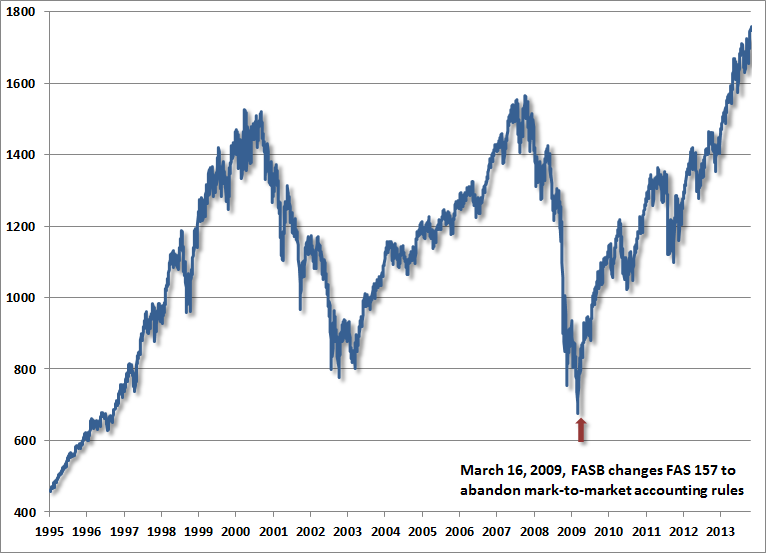 [ Enlarge Image ]
[ Enlarge Image ]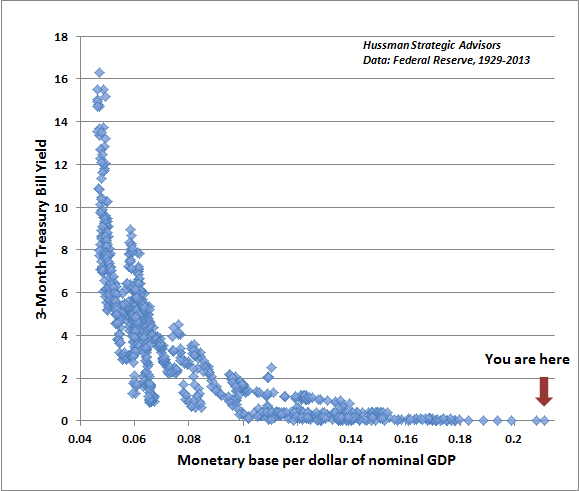 [ Enlarge Image ]
[ Enlarge Image ]


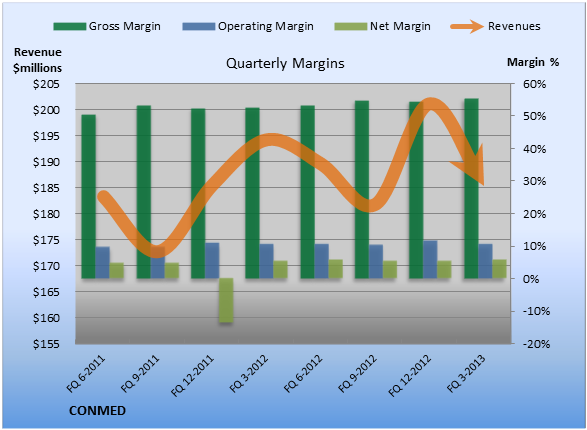




 Hosted by Marketfy
Hosted by Marketfy 